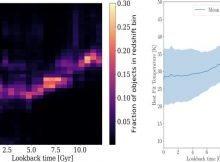
Astronomy
New Discovery About Distant Galaxies: Stars Are Heavier Than We Thought
| June 1, 2022
Eddie Gonzales Jr. – MessageToEagle.com – For as long as humans have studied the heavens, how stars look in distant galaxies has been a mystery. Now, a team
Read More
